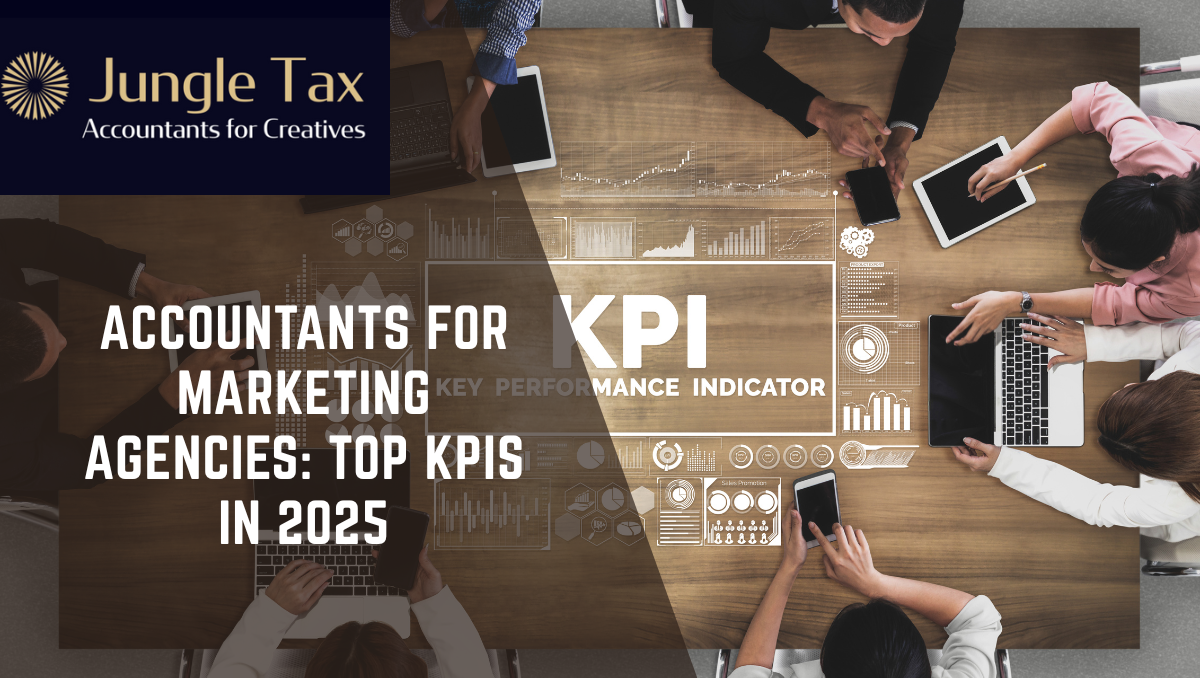
Introduction
Marketing agencies thrive on creativity and results, yet financial management remains a critical pillar for sustainable growth. Understanding which metrics matter allows agencies to optimise operations, allocate budgets wisely, and maintain profitability. Expert accountants for marketing agencies help identify, track, and analyse key financial KPIs, ensuring businesses make data-driven decisions. In 2025, agencies face new market dynamics, evolving client expectations, and fluctuating costs. This makes tracking the right KPIs more critical than ever. This guide examines the essential financial KPIs that every marketing agency should monitor, as well as how accountants can provide clarity and insight for informed growth.
Subheading 1: Revenue Per Client
Revenue per client is a vital KPI for any agency, highlighting profitability at the individual client level. Tracking this metric allows agencies to:
- Identify high-value clients and underperforming accounts
- Adjust pricing strategies or service packages.
- Forecast future income more accurately.y
Accountants for marketing agencies can integrate client-level revenue tracking into accounting systems, ensuring all income is attributed correctly and financial projections are reliable.
Subheading 2: Gross Profit Margin
Gross profit margin measures profitability after accounting for direct costs, such as salaries, software, and project-specific expenses. A healthy margin indicates efficient service delivery and cost control.
Why it matters:
- Detects overspending on client projects
- Assists in pricing strategy adjustments
- Highlights operational efficiency
With professional oversight, accountants calculate accurate margins, factoring in fluctuating project costs and overheads, enabling agencies to maintain profitability even with diverse client portfolios.
Subheading 3: Client Acquisition Cost (CAC)
CAC represents the average cost to acquire a new client. Tracking CAC enables agencies to evaluate the effectiveness of their marketing campaigns and sales efforts.
Key insights provided by accountants for marketing agencies:
- Monitor marketing spend relative to client revenue
- Determine payback periods for client acquisition.
- Optimise investment in lead generation channels
By analysing CAC alongside lifetime client value, agencies can make strategic decisions about growth investments.
Subheading 4: Accounts Receivable Turnover
Late client payments can disrupt cash flow and operational efficiency. Accounts receivable turnover measures the speed at which outstanding invoices are collected and paid.
Benefits of tracking this KPI:
- Improves cash flow management
- Identifies clients with payment delays
- Supports budgeting and financial planning
Accountants for marketing agencies can implement structured invoicing systems, automated reminders, and reporting dashboards to effectively manage receivables.
Subheading 5: Operating Expenses Ratio
The operating expenses ratio compares total operating costs to total revenue. It helps agencies understand how much revenue is spent on running the business.
Insights include:
- Pinpointing areas to reduce unnecessary spending
- Improving resource allocation for profitability
- Benchmarking expenses against industry standards
Professional accountants analyse expense trends, enabling agencies to maintain lean operations while supporting creative output.
Subheading 6: Client Retention Rate
It is often less expensive to retain existing clients than to acquire new ones. The client retention rate measures the percentage of clients who continue services over a given period.
How accountants contribute:
- Link retention data with revenue tracking
- Identify profitable long-term clients.
- Support strategic planning for client services.
High retention rates indicate stable income streams, enabling agencies to plan for growth with confidence.
Subheading 7: Utilisation Rate of Staff
The utilisation rate shows how effectively staff time is spent on billable work. Monitoring this KPI ensures employees are working efficiently, optimising project profitability.
Accountants for marketing agencies can integrate time tracking with financial reporting, highlighting the cost of unproductive hours and guiding staffing decisions to maximise efficiency.
Subheading 8: Project Profitability Analysis
Analysing profitability at the project level helps agencies determine which campaigns generate the best return. This insight is crucial for pricing, resource allocation, and portfolio management.
How accountants support this KPI:
- Track costs and revenue per project
- Identify projects with lower margins that are suitable for improvement.
- Forecast potential profit from a future projects
Regular analysis allows agencies to prioritise high-performing clients and services, aligning resources for maximum growth.
Subheading 9: Cash Flow Forecasting
Cash flow forecasting predicts incoming and outgoing funds, helping agencies prepare for periods of low revenue or unexpected expenses.
Benefits of professional accounting support:
- Avoid cash shortages and late payments
- Align spending with projected income.
- Ensure long-term financial stability.
Accountants for marketing agencies provide tools and insights to enable accurate forecasting, facilitating proactive financial management.
Conclusion
Tracking financial KPIs is essential for marketing agencies looking to succeed in 2025. From revenue per client and gross profit margin to CAC, retention, and cash flow forecasting, these metrics provide clarity on profitability, operational efficiency, and long-term growth. Partnering with expert accountants for marketing agencies ensures data is accurate, actionable, and aligned with business goals. Implementing these KPIs empowers agencies to make informed decisions, optimise performance, and thrive in a competitive market.
Ready to optimise your finances with expert guidance? Get in touch with JungleTax right now at hello@jungletax.co.uk or give our knowledgeable accountants a call at 0333 880 7974.
FAQs
Agencies should track revenue per client, gross profit margin, client acquisition cost, retention rate, staff utilisation, and cash flow.
They integrate financial data, provide accurate calculations, and generate insights for decision-making and strategic growth.
Retaining clients reduces acquisition costs and ensures stable revenue streams, which directly impacts profitability.
Yes, they analyse past revenue, project income, and expenses to provide reliable cash flow forecasts.
KPIs highlight profitable clients, identify inefficiencies, inform pricing decisions, and support informed financial decisions
